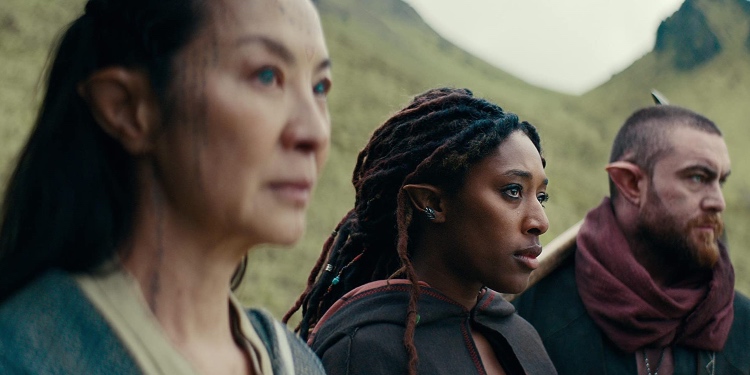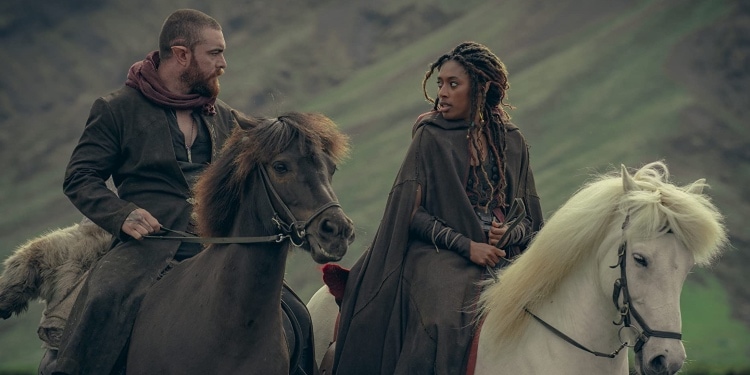While you don’t need to watch Witcher: Blood Origins before watching The Witcher season 3, it will help clarify a lot. The prequel series is set almost a thousand years before the events of The Witcher and showcases a world without humans, filled with elves, magic, and world-traveling possibilities. It follows seven soldiers on their journey to Xintrea before the conjunction of the spheres takes place.
Blood Origin also details the origin of the elder blood, Ithlinne’s (Ella Schrey-Yeats) early life and prophecies, the first prototype-witcher, and how it connects to Ciri (Freya Allan). This certainly adds context to Season 3 and the many complicated threads in the show. Read on to discover how Blood Origin is connected to The Witcher Season 3 and whether you should watch it first.
Blood Origin Is Set Before The Events of The Witcher

If you’re new to the Witcher lore and haven’t read the books or played the games, The Witcher :Blood Origin does a decent job of introducing the mages, monoliths, and a time when the elves were the rulers of the land. Fast forward a thousand years, the elves are being imprisoned, humans have taken over, and witchers are the only ones who can destroy the monsters roaming the mainland from other worlds.
Blood Origin also answers numerous questions fans have had since The Witcher series was released in 2019, like the origin of the monoliths and how the first conjunction happened. According to the prequel series, the first conjunction occurred because of the chaos magic used to destroy a monolith. This caused a tear in the veil between worlds, leading to the first humans and monsters making their way into the main world. It also explains how Eredin Breacc Glas (Jacob Collins-Levy)/King of the Wild Hunt, landed in the alien world.
Blood Origin also delves into how the first witcher was made. Before there were witcher schools, what was the story behind creating them? In this prequel series, the first witcher prototype is made, and although he wasn’t perfect enough to survive the transition, it was critical to show why witchers have monster blood in their veins.
The Events Of Blood Origins Adds Context to The Witcher Season 3

While most fans wondered why Netflix released Blood Origin before The Witcher season 3, it was a brilliant idea. Blood Origin explores more of Ciri’s bloodline, the wild hunt, and how Witchers began fighting monsters. In Blood Origin, the mages can travel to alien worlds using chaos magic and the monoliths. In Witcher Season 2, we see Ciri travel to the same world where Eredin was trapped. As she learns more about her powers, fans will likely see more of her abilities and the wild hunt in the third season.
Blood origins detail Ithlinne’s prophecies echoed throughout the first and second seasons about Ciri’s elder (elf) blood. The series also reveals that Eile (Sophia Brown) and Fjall (Laurence O’Fuarain) are likely Ciri’s millennia-old ancestors. They conceived a baby after Fjall took the witcher potion. So this means that Ciri doesn’t only carry elder blood but also the magical blood of the first Witcher. It also confirms that Ciri is the long-lost descendant of Lara Dorren (Niamh McCormack), a powerful elf sorceress. Fans got a brief glimpse of Dorren in The Witcher season 2. This could also explain why Vesemir (Kim Bodnia) assumed that Ciri’s blood could help make new Witchers because their numbers are dwindling in season 2.
According to everything we know about Witcher season 3, it’s meant to focus on the wild hunt, which fans saw towards the end of the second season. The leader of the wild hunt is Eredin, who is given a backstory in The Witcher: Blood origin as a young man. With the huge role he will play as a villain in season 3, it’s probably best to see firsthand and understand how he and his men became the wild hunt, why they’re after Ciri, and why fans should be worried.
 Follow Us
Follow Us





